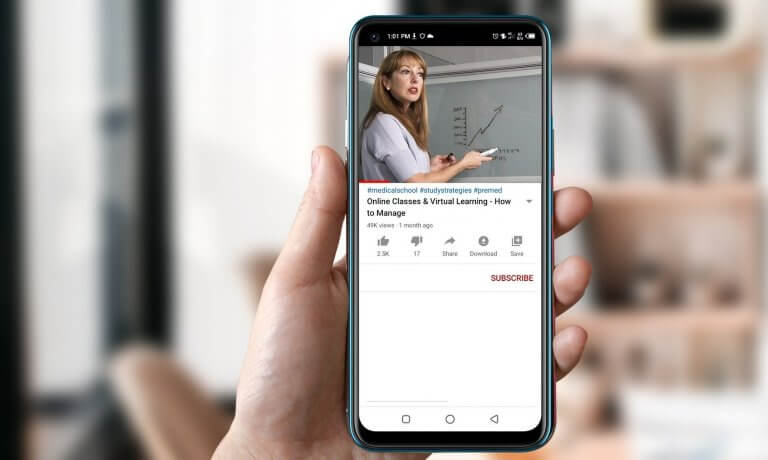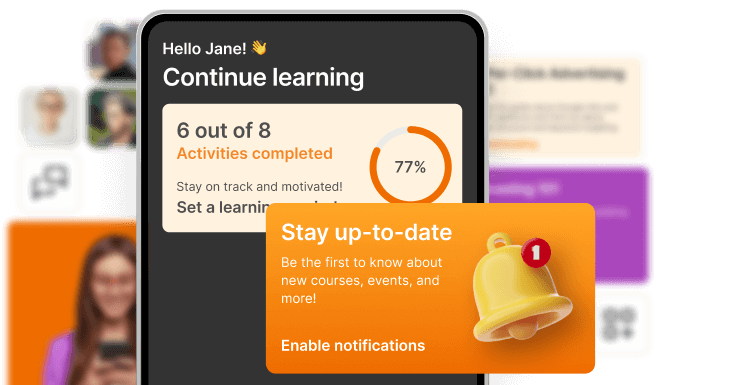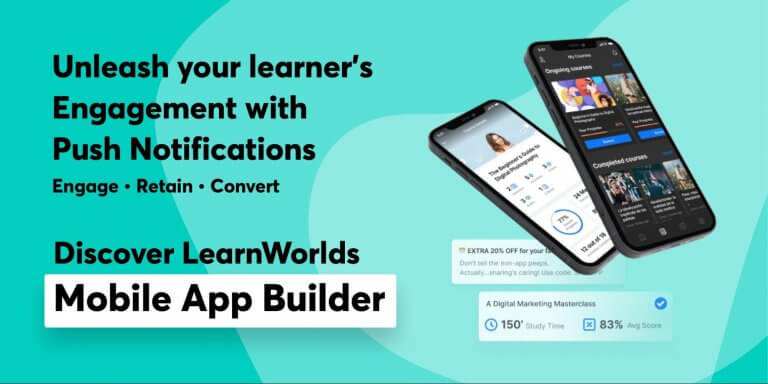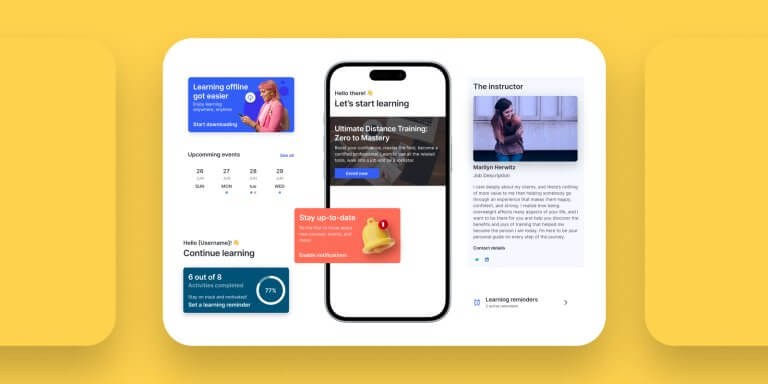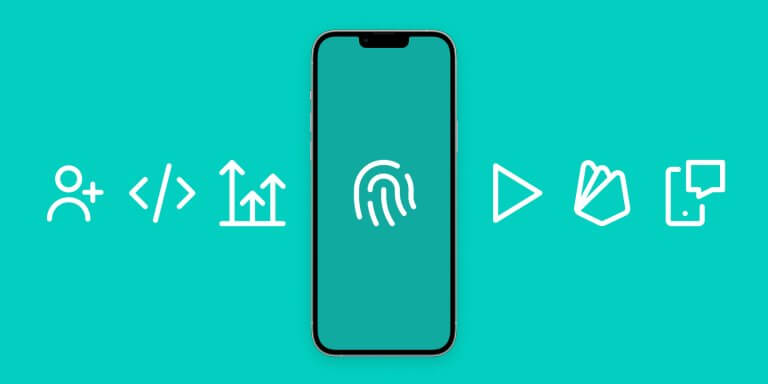Table of Contents
In the digital age we live in, the world has become very reliant on mobile phones, and it’s not just because of social media. The popularity of smartphones and handheld devices has led to the development of many useful and groundbreaking apps and features. One of the trends that has emerged from this is mobile learning.
Mobile learning is the new standard in education and way of learning. There are new mobile learning apps being introduced every day, providing high-quality educational content to students and employees who want to learn new skills or improve existing ones.
The demand for mobile education is growing every year, and experts predict it will increase at a rate of 34.4% by 2028!
Such numbers are here to confirm that mobile learning is the future of education. That’s why it’s important to adopt a “mobile-first” approach, which means designing your educational solutions primarily for mobile users.
To succeed in this, you will need to create a mobile learning app that not only delivers your content effectively but also engages users and motivates them to learn more.
LearnWorlds is considered the best mobile Learning Management System (LMS) in the market and offers a Mobile App Builder that you can use to build a branded mobile app. You can try it out for free with a 30-day trial. 👇
To help better understand its potential, this article explains what mobile learning is, describes its importance and characteristics in relation to eLearning, and lists its remarkable benefits.
What is Mobile Learning?
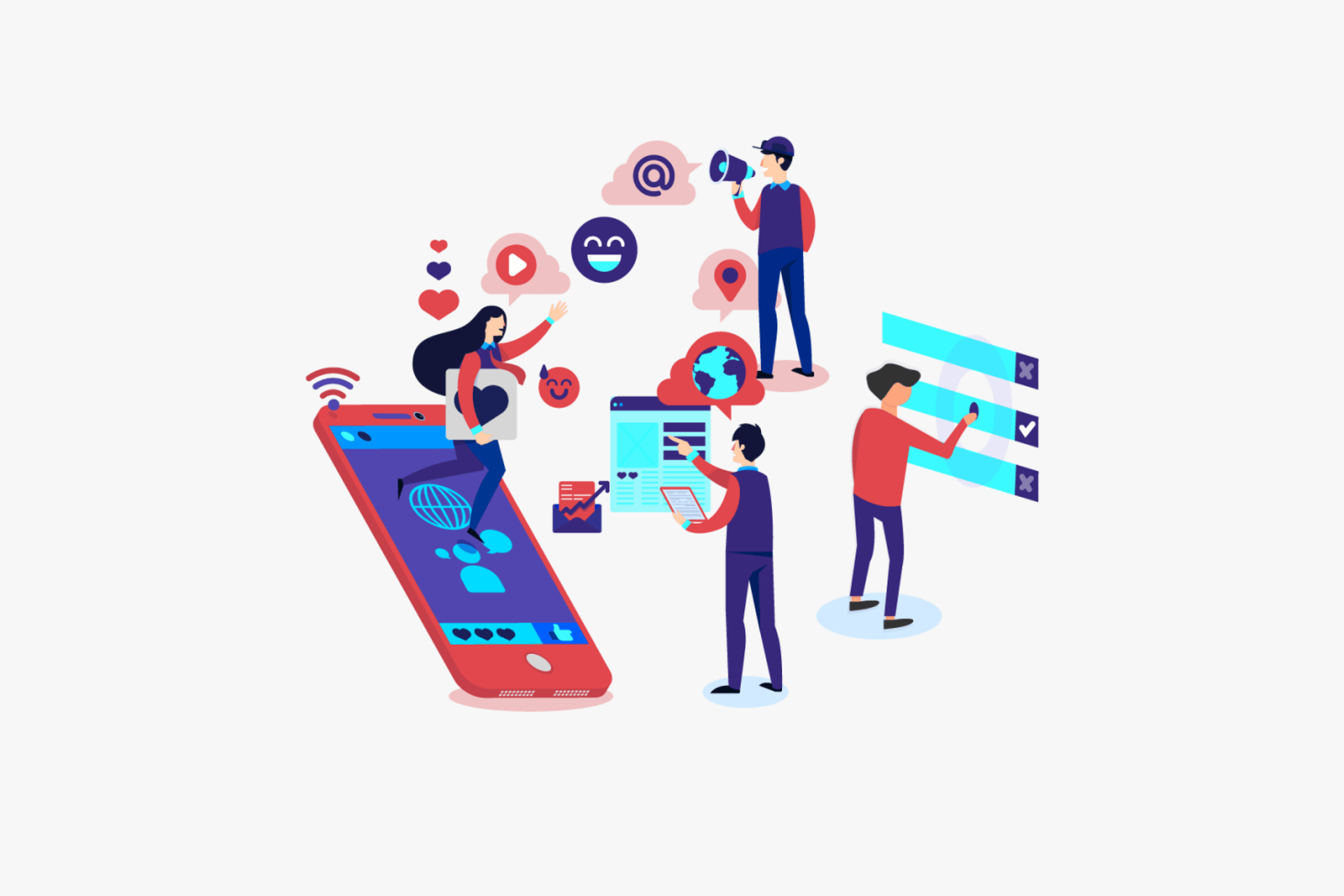
Mobile learning, often abbreviated as “m-learning,” refers to the use of mobile devices such as smartphones and tablets for educational purposes. It involves delivering educational content and materials through mobile apps, websites, or other digital platforms that can be accessed on mobile devices.
Mobile learning allows learners to access educational resources and engage in learning activities anytime and anywhere. It can include a wide range of content, from text-based materials to multimedia resources like videos, interactive quizzes, and simulations.
This approach to learning is particularly valuable for individuals who may need more access to traditional classroom settings or desktop computers. It’s commonly used in formal education, such as schools and universities, as well as in informal settings for self-paced learning and in corporate training for skill development.
Mobile learning can cover a variety of subjects and topics, and it leverages the portability and ubiquity of mobile devices to make learning more accessible and engaging.
Types of Mobile Learning
There are various forms of mobile learning, and each one serves a different purpose in helping you deliver your elearning courses and hit the learning objectives you’ve set for them effectively.
Each type of learning performs differently for a specific audience e.g. certain types of learning styles – auditory, visual, reading/writing, or kinesthetic, catering to diverse learning needs and preferences. The level of personalization and engagement for every type of learning also differs. For example, interactive and gamified mobile apps, can make learning more enjoyable and keep learners motivated.
Different types of mobile learning include:
All of these forms of mobile learning put distance education right into the hands of learners. With their devices, they can access training content on the go, giving them constant access to information, learning materials, and resources. It can offer a wide range of educational content from visual materials like videos and images to more traditional text-based materials.
Mobile learning often goes hand in hand with microlearning whose applications can make learning 17% more efficient. Microlearning is a modern learning approach that breaks down the learning process into small, easily digestible parts that take no more than 10 minutes to complete. Integrating microlearning into an app can boost course completion rates, increase user engagement, and attract a broader audience of learners.
Mobile Learning vs. Electronic Learning
Mobile learning and electronic learning (e-learning) are both forms of digital education, but they have distinct characteristics and can be used in different contexts.
Here’s a detailed comparison of the two:
The main areas of difference are found in accessibility, the device and platform that is used to deliver learning content, the content format and complexity, interactivity, usage scenarios, and offline access.
Accessibility:
Mobile learning takes place on mobile devices such as smartphones and tablets. Mobile learning offers high accessibility as learners can access content on the go, anytime and anywhere they have an internet connection, or even offline in some cases.
E-learning encompasses a broader range of digital learning methods, including desktop or laptop-based online courses. While it can be accessible from various devices, it may not be as mobile-friendly as mobile learning.
Device and Platform:
Mobile learning primarily takes place on mobile devices with specialized apps or responsive websites designed for smaller screens.
E-learning typically involves learning on a computer or laptop, and it may include various formats such as web-based courses, virtual classrooms, or multimedia presentations.
Content Delivery:
Mobile learning content is often delivered in bite-sized, easily digestible formats like short videos, quizzes, or microlearning modules. It’s suited for quick, on-the-go learning.
E-learning content delivery can vary widely, from text-based documents to interactive multimedia presentations. It may include longer and more comprehensive courses.
Interactivity:
Mobile learning apps often incorporate touch, gestures, and mobile-specific interactions. As such, interactivity may be more intuitive for mobile users.
Interactivity can also be high in e-learning, with features like quizzes, discussion boards, and simulations. However, it may not be as touch-centric as mobile learning.
Content Complexity:
Mobile learning is suited for simpler content and quick reference materials. It’s great for reinforcing knowledge or learning specific skills.
E-learning is better suited for more in-depth learning experiences, including complex subjects and formal education.
Usage Scenarios:
Mobile learning is ideal for on-the-job training, just-in-time learning, and informal learning scenarios. It’s often used for skill development, performance support, and mobile-friendly content delivery.
E-learning is more commonly used in formal education, corporate training programs, and structured online courses. It can be used for a wide range of subjects and learning objectives.
Offline Access:
Some mobile learning apps and platforms offer offline access, allowing users to download content and learn without an internet connection.
E-learning generally relies on an internet connection, although some e-learning platforms may offer limited offline capabilities.
The Benefits of Mobile Learning

Whether you’re using mobile learning for corporate training or bringing it into a classroom, the benefits are endless. From easy access to improved information retention, developing a mobile app can bring your learning strategies up to date.
These are the main advantages of mobile learning:
It is easily accessible
Mobile learning allows learners to access educational content anytime, anywhere, as long as they have a mobile device and an internet connection. This level of accessibility is particularly valuable for individuals with busy schedules or those who may not have access to traditional classroom or training settings.
For example, it is useful in the workplace for remote learners who can’t physically attend the office for in-person seminars or workshops, and can only have access to the training courses delivered by their employer, via mobile training.
This ease in accessibility of mobile learning is evidenced by its popularity in app stores. Statista report shows that education is the third most popular category on the App Store and second on Google Play respectively. On both platforms, the category has a similar percentage of almost 9% of the total.
It is convenient and flexible
M-learning offers flexibility in terms of when and where learning can take place. Learners can access courses 24/7 and fit in a session whenever they have a minute to spare. They can choose to go through a learning program at their own pace and study during their commute, while waiting in line, or during breaks at work, making it easier to integrate learning into their daily routines.
For organizations that need to introduce an onboarding program to a large number of employees, for example, this convenience and flexibility that mobile learning offers in the way of reaching them, training them, and keeping their interest at heights, is priceless.
It is interactive
Mobile devices offer various multimedia features, such as videos, quizzes, and interactive simulations, which can enhance engagement and make learning more enjoyable. Learners can actively participate in their education through touchscreens, gestures, and multimedia content.
By leveraging the unique capabilities of mobile devices and learning tools, it is possible to create engaging, dynamic, and personalized learning experiences. These interactive elements keep learners interested, leading to increased engagement, knowledge retention, and overall effectiveness in the learning process.
It is engaging
Mobile technology and its applications are designed to engage users, and mobile learning apps are no different. It offers endless ways to engage with and connect to learners, and because most people take their mobile devices everywhere, they can use your app anywhere, anytime.
Mobile learning apps are designed around the learner, and the platform is versatile enough to keep even the most disengaged learners interested. It does this by supporting visual learning in the form of audio, video, and images and creating a dynamic and fast-paced learning environment.
It is personalized
Mobile learning platforms can often adapt to the individual needs and preferences of learners. This personalization can include adaptive learning algorithms that adjust the difficulty of content based on a learner‘s progress or the ability to choose from a variety of resources and materials that align with their interests.
With personalization, there’s a responsibility to protect user data. If you’re storing data in your servers, research the top CASB vendors to secure your learners’ personal information. A CASB is cloud-based or on-premises security software. It enforces enterprise security policies for those accessing cloud services.
It is cost-effective
Mobile learning can reduce the costs associated with traditional in-person classroom-based training, such as travel expenses, printed materials, and physical infrastructure. It can also help organizations save money by offering scalable learning solutions.
That’s because mobile applications are more affordable than ever to build and maintain. While some cost does come with creating and managing a mobile learning app, there are ways to offset this or even make a profit.
In-app purchases, advertisements, and integrating premium accounts will bring money in while providing students with accessible content. Though charging for applications in the app store is common practice, providing free downloads will get users to put your application on their devices.
It promotes collaboration
One problem with distance learning is the lack of collaboration between peers. However, mobile learning apps focus on social learning and are designed to improve communication and peer support, building a vibrant community of learners.
Mobile devices enable collaborative learning experiences, allowing learners to connect with peers, mentors, and instructors to discuss ideas or exchange feedback in real time from anywhere, through discussion forums, comment sections, emails, text messages, and video conferencing tools.
It boosts retention and completion rates
Mobile learning’s primary benefit is higher retention and completion rates. In the end, success is what you want from your learners. This means that your success is their success and they must stay engaged with a course and finish it.
Whether you’re providing training in the professional world or teaching students, mobile learning makes it easy for learners to keep returning to a course. It also makes them accountable for their progress. With a mobile app, you can send out notifications and reminders, encouraging them to stay on track with their learning goals, thus reducing drop-out rates.
You can also track engagement and learner progress, gathering that information in one place and making it available to the learner, organization, and other stakeholders.
It embraces microlearning
Mobile learning lends itself well to microlearning, where content is delivered in short, bite-sized chunks or involves only brief learning activities. Microlearning is not only highly engaging but also encourages learners to meet a series of short-term goals.
Mobile apps are the perfect platform to deliver this type of learning since without spending hours trying to absorb the material, learners get to engage in the taught material for just a few minutes at a time. This learning approach is effective for retaining information and can be more manageable for busy learners.
It fosters inclusivity
Mobile learning can be designed to accommodate different learning styles and abilities, making it more inclusive for a diverse range of learners. Mobile devices often come with built-in accessibility features, such as screen readers, magnification tools, and voice command options. These features can assist learners with visual, hearing, or motor impairments, making educational content more accessible to a wider range of individuals.
Also, when designing mobile learning content there is the option for educators and developers to adhere to universal design principles. Universal design aims to create products and environments that are accessible and usable by people of all abilities. By following these principles, mobile learning can become more inclusive from the start.
Building Your Own White-Label Mobile App with LearnWorlds

Now that you know what mobile learning is and its benefits, let’s talk about how you can start building your own mobile app and delivering mobile learning.
With LearnWorld’s powerful Mobile App Builder, you can easily launch your online courses with your very own native mobile app for iOS and Android marketplaces, and start crafting engaging mobile learning experiences for your learners.
LearnWorlds White-Label Mobile App Builder is packed with some amazing features that your learners need, and it’s here to take mobile education a step further, helping you reap all the rewards of mobile learning for your business. With it, here’s what you get:
✨ Customization to its fullest
With LearnWorlds’s Mobile App Builder, you can customize colors, backgrounds, splash screens, and more. Its click-and-edit builder helps to create a mobile app that immediately connects learners to your organization using your brand’s colors, logo, and fonts.
LearnWorlds’ 100% white-label solution places your brand at the forefront and ensures that it fully supports your product while making sure your organization is the face of your app.
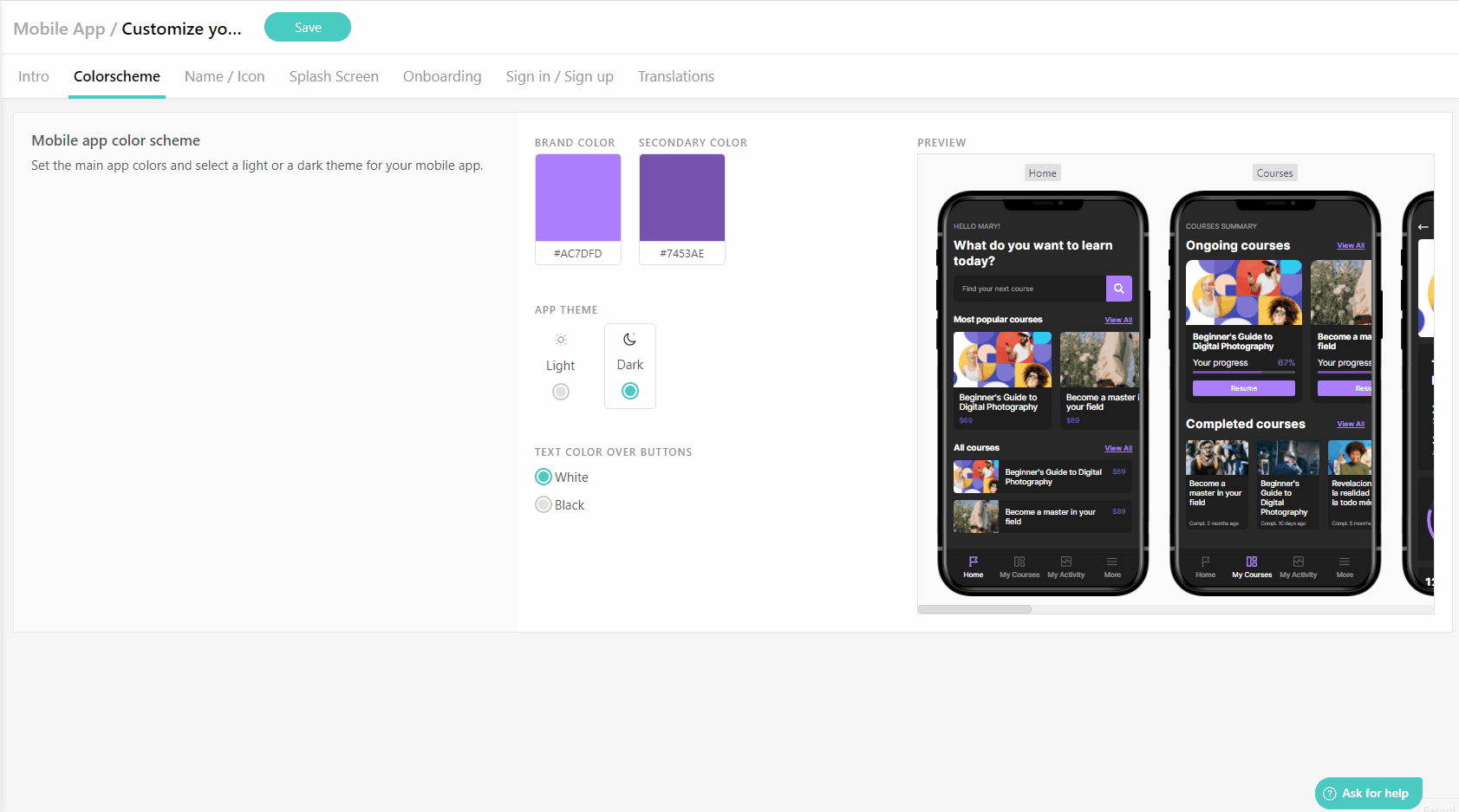
🔥 Native mobile app technology
LearnWorlds uses cutting-edge native technology and user experience design to create fully native mobile apps. This state-of-the-art tech allows you to ensure your robust mobile app works on the widest range of devices. It also makes sure your device stays relevant in today’s market to provide enhanced learning experiences to your audience.Mobile education is the future, and the future is now
Mobile apps are the most cutting-edge and accessible way to access information. Making your material mobile-friendly allows it to be accessed by the widest range of users.
Mobile learning apps allow students to engage with your content throughout the day, wherever they go. This is perfect for students who have focus issues or are always moving between extracurricular and social activities. It can be a great way to increase online course participation.
🛍️ Your OWN app on your OWN app store account
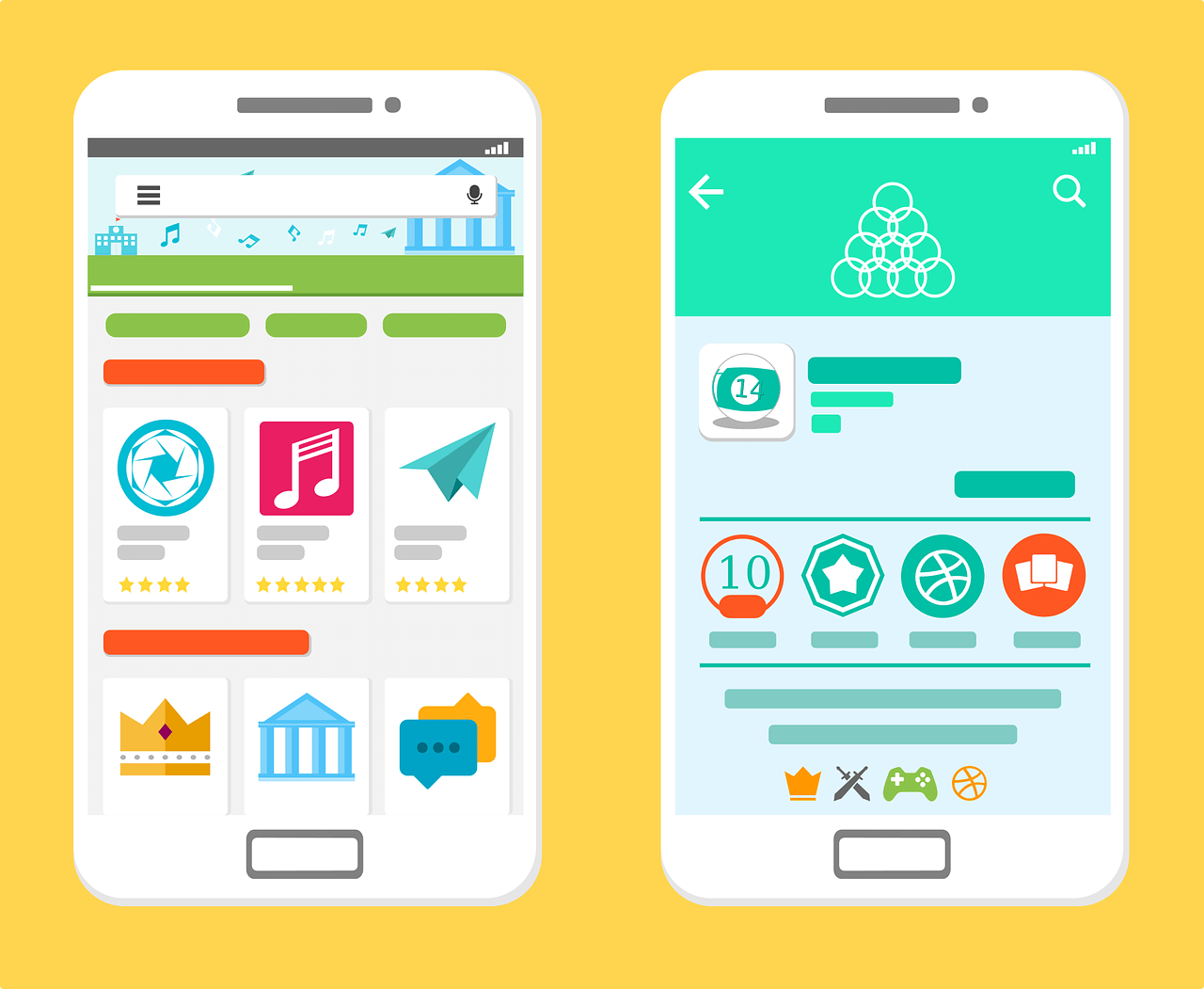
Launch a native iOS and Android app into your Google Play Store account and Apple App Store account. This means your app will be under your brand from the start and your learners will know where to find you and download your app directly.
No need to hire a developer to build it for you, pay hundreds on custom development, or wait six months until it gets launched.
🧑🤝🧑 Expand your reach
You want to reach as many learners as possible, right? Whether online, digital, mobile, or hybrid, it’s one of the main goals of trainers and educators. Reaching a wider audience and increasing your brand awareness is now possible with a mobile app that allows you to meet your customers where they are.
👥 Keep learners engaged
If you want to increase your course completion rates and help learners reach their full potential, you will need the push notifications feature that LearnWorlds Mobile App Builder provides. Using highly targeted notifications at every stage of your learner’s journey will help them stay motivated and dedicated to their goals while on the go.
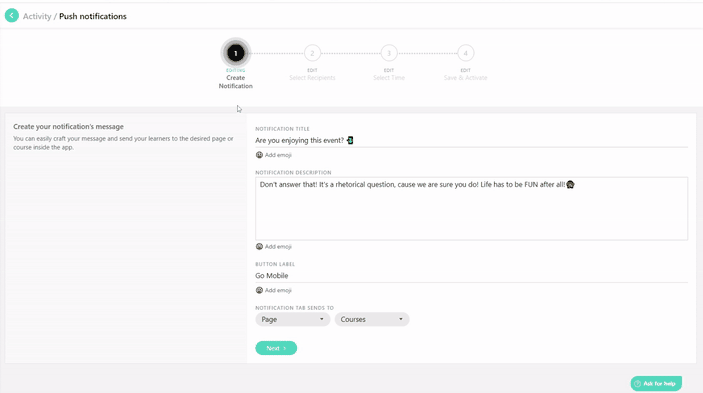
🚀 Boost your revenue with in-app purchases
Add in-app purchases to your branded mobile app to grow your revenue and maximize your profits. Make your online academy or business more profitable by setting up one-off payments, and decide whether your learners will access it for free or a fee.
Integrate Apple Pay and Google Pay for seamless in-app purchases and use push notifications to promote new products or sales events.
📲 Deliver training anytime & anywhere
Put your app in your learner’s pocket. This allows your learners to engage with your content throughout the day, wherever they go – even while they are offline! Making an app can keep your learners engaged with your course 24/7, giving them access to the educational material whenever they need it.
💡 Need help with creating your mobile app with LearnWorlds? Make sure you check these resources and this video 👉
💁♀️ Want to offer mobile learning but don’t know where to start? We’ve got your back. You can launch your own branded mobile app with LearnWorlds in 3 easy steps.

Step 1: Get started with LearnWorlds
Get your 30-day free trial with our platform, and start creating your own LearnWorlds online academy. Doing so should help you familiarize yourself with its advanced features and capabilities.
Step 2: Set up and customize your mobile app
Start setting up your branded app, customizing the colors, backgrounds, texts, and splash screens and match the look and feel of your brand.
Step 3: Launch your mobile app
Once you are done click ‘Sumbit’. Our team will test your mobile app, list it, and get it live on the app stores. And, that’s it! Does it get any easier?
Ready to Kickstart Your Mobile Learning Journey?
As we see mobile devices becoming more sophisticated and learning more digital, the mobile learning industry will continue to grow. From humanities to job training to STEM (Science, Technology, Engineering, and Math), mobile learning will soon be a staple in our lives, so there’s no better time to embrace mobile learning than now.
Whether you have a great idea for an independent mobile learning app or are an organization looking to train your employees, you can go from concept to launch quickly and easily.
With LearnWorlds Mobile App Builder, you can always ensure your product works and becomes available to your users easily and quickly. That’s because we take the most challenging part of the development and UX design and leave you to focus on providing the best content.
Be part of the action! Launch your native mobile app and craft amazing mobile learning experiences through your elearning courses.
Kyriaki is a Content Creator for the LearnWorlds team writing about marketing and e-learning, helping course creators on their journey to create, market, and sell their online courses. Equipped with a degree in Career Guidance, she has a strong background in education management and career success. In her free time, she gets crafty and musical.

